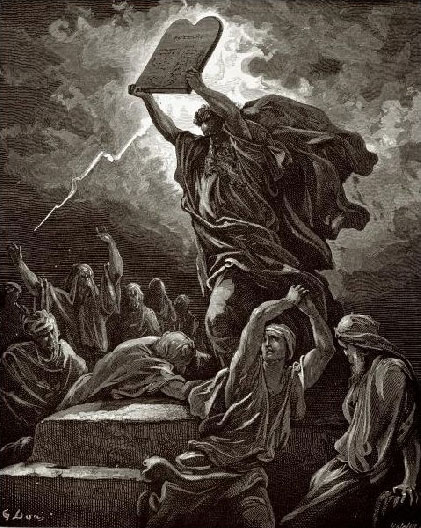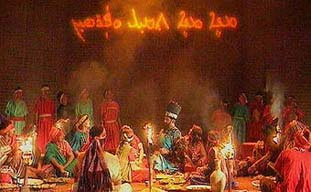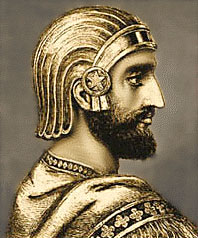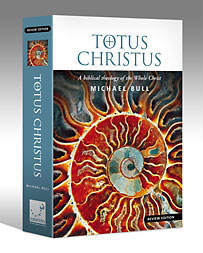Inside Themselves

The content of this post has been revised and included in Bible Matrix II: The Covenant Key.

The content of this post has been revised and included in Bible Matrix II: The Covenant Key.

Belshazzar curses the day he let the Chaldeans talk him into signing up with Facebreadbook.
“In the same hour the fingers of a man’s hand appeared and wrote opposite the lampstand on the plaster of the wall of the king’s palace; and the king saw the part of the hand that wrote.” Daniel 5:5
“The fact that the Watcher Lampstand oversees the Facebread in the Temple means that Israel undergoes a continual inspection of jealousy. God watches all the time. In Daniel 5, the Lampstand “arrives” and sees Belshazzar’s face, “facebread” because it is at his great “bread”, and his face is undone as his “splendours change”. It is precisely as Belshazzar is drinking the wine that the judgment appears, as in the case of the woman in Numbers 5. As a priestly agent is involved in bringing judgment in Numbers 5, so Daniel is involved in bringing judgment in Daniel 5. As the woman’s loins are undone, so are Belshazzar’s. The woman’s judgment is barrenness; in the case of Belshazzar the king, the judgment is the same: no future.”1
Notice the “Holy Place” configuration. The Lampstand, the Table, and the graven Word (Ark). Daniel is the Incense Altar, the accepted elder. Why do pictures of this event never include the Lampstand? It is crucial.
_____
1 James B. Jordan, The Handwriting on the Wall, p. 289.
See also Jesus at Belshazzar’s Feast: An Explanatory Disquisition on an Aspect of the Story of the Woman Taken in Adultery for an interesting read.
“Danger!” the dispensationalist pundits are shouting. “Watch out for replacement theology!” This specter of “replacement theology,” also masquerading under the pseudo-academic moniker “supersessionism,” looms ominously over Christendom. One blogger blogs, “One of the most dangerous and subversive doctrines held by adherents of Preterism, is the view that in A.D. 70, at the destruction of Jerusalem by the Roman armies, God’s covenant nation of Israel was superseded by the Christian church.” A website adds, “There is a demonic cancer coursing through the life blood of the Church of Jesus Christ and its name is REPLACEMENT THEOLOGY.” Yet another puts it bluntly, “This is a heresy . . .” Joel McDermon, Replacing Replacement Theology
Fight terminology with terminology. Throughout the Bible it is clear that God’s priestly nation went through many death-and-resurrection renewals. No one calls those ‘replacements.’ Can you imagine theologians arguing that Ezra’s Temple and Nehemiah’s new Jerusalem were only a temporary parenthesis, and that God would give Israel back their old kingdom?
The same thing exactly happened in the first century. Israel died and was resurrected anew. So, I propose new jargon – ‘Transformation Theology: don’t stay left behind.’
Land.
I read David Chilton’s The Days of Vengeance in 1989, and it sure surprised me to learn that the word ‘earth’ in the Bible also means ‘land.’ This simple fact alters the scope of John’s Revelation entirely. It is about God’s ending of the Covenant He restored after the Babylonian captivity, and so first century Judah is the main subject. It was a repeat of events in Jeremiah’s day, so let’s backtrack a little…
I received horrified reactions for using this phrase. God hates divorce, and yet…
“Then I saw that for all the causes for which backsliding Israel had committed adultery, I had put her away and given her a certificate of divorce; yet her treacherous sister Judah did not fear, but went and played the harlot also.”(Jeremiah 3:8)
Q: How could God divorce and remarry, and yet keep the Law? Marriage is “till death.”
A: Through death and resurrection.
The only way the Lord could make a new covenant was through death and resurrection. Not only did Israel die, but the Covenant died – the Ark was taken by God. Jeremiah predicted the Restoration Covenant, and redeemed some Land to prefigure what God Himself would do after the captivity.
The entire pattern was repeated in the first century. Christ, the Ark, ascended to God as firstfruits, and Israel also died, and was resurrected as the Christian church. There were two feasts in AD70, predicted towards the end of the Revelation. 1 The marriage supper of the Lamb in heaven, and 2 the feast of the unclean birds as Jezebel-Judah was finally destroyed under the Covenant curses.
The LORD will attack those nations like a warrior fighting in battle. He will take his stand on the Mount of Olives east of Jerusalem, and the mountain will split in half, forming a wide valley that runs from east to west. Then you people will escape from the LORD’s mountain, through this valley, which reaches to Azal.” (Zechariah 14:3-5)
diSpENSATIONALISTS love to quote verses from Zechariah and apply them to modern Jews. While this breaks all the rules of interpretation (context, first audience, book structure, common sense, etc.), those who realise its events were all fulfilled, culminating in the first century, still have a lot of trouble with the details. But the answers lie in Old Testament typology.
Not only does the entire book of Zechariah follow the ‘Egypt to Canaan’ pattern, each of the ‘post-vision’ chapters does so individually. There is too much detail to go into here, but I want to deal with the splitting mountain.
The Ark was the Lord’s footstool. It, along with both the incense and bronze altars, had to be purified with blood. The Lord will only stand in a clean place, and indeed even required His priests to have clean feet. As a square altar, Canaan was purified with blood by Abraham. It was purified with blood again under Joshua in the ‘devotion’ of Jericho. Immediately after this victory, the people were divided between Mounts Ebal and Gerizim, one for the blessings of the Law and one for curses (Joshua 8). Blood, and a split mountain, made a way into the new Land.
Here’s where the structure of the passage is important. It follows the feasts pattern (Lev 23) and this section appears at Atonement (Covering). One goat was blessed and ascended to God; the other carried the curses to destruction (ez azal). As the Lord’s footstool, the Mount of Olives was divided to the north and the south, just like the Temple veil was torn in two. With Christ’s death as Passover, Olivet became symbolically like Mount Gerizim and Mount Ebal at the birth of a new Promised Land, the heavenly Canaan, the New Jerusalem.
The mountain was split from the east to the west. The faithful would enter from the east, the opposite direction to Adam’s expulsion. The death and resurrection of Christ tore the Garden door open, and there were earthquakes. The death of the first century church under Herod/Rome also tore the Land in two. Old Israel became the garment of the old High Priest, torn under the Covenant curse (Matthew 26:65) to be eaten by birds and beasts.
Revelation also uses the symbolism of two mountains. One was a flaming Sinai, thrown into the Gentile sea as Jesus promised (curses – Matthew 21:21). The other was a new, heavenly Zion – the one mentioned by the writer of Hebrews (blessings – Hebrews 12:18). The saints prayed as Jesus commanded and Judaism and Christianity were split in two when Christ came in vengeance in AD70. Judaism went to Azal.
When God is making something new, He begins by tearing something in two. If it happens to be you, the something new might not be you. This is something Adam knew.
(Zechariah’s visions showed two bronze mountains allowing the Restoration era ‘gospel’ to go out into the world after the rebuilding of the Temple in 6:1. The events of Zechariah’s day prefigured the restoration of Israel in the Christian church.)
“And I cut off the three shepherds in one month…” Zechariah 11:8
Who are these mysterious three shepherds?
Theories abound, most prominently that the Lord refers to the offices of prophet, priest and king in first century Judah. Perhaps, as with Zechariah 14, the pattern of Israel’s feasts (as outlined in Leviticus 23) structures Zechariah 11. If you look carefully you will also see the Creation week.
 For the ancient world, a garden, a house, a city or a temple was like a woman. An invading army, after storming through the gates of a city, would rape the virgins. It was a brutal reminder that, like the women, the conquered city was not impregnable.
For the ancient world, a garden, a house, a city or a temple was like a woman. An invading army, after storming through the gates of a city, would rape the virgins. It was a brutal reminder that, like the women, the conquered city was not impregnable.
“In order to understand this, we have to think like ancient Hebrews, and not like modern people… Adam was supposed to guard the garden, and he was also supposed to guard his wife.
The Song of Solomon compares the woman to a garden several times in the course of the book. In all languages, the words for city, garden, and the like are feminine, and we speak of a city as “she” in English today.
Let us take a look at the city in the Bible, remembering that what is said of the city is also true of the house, tent, Temple, Tabernacle, and other enclosed homes for humanity. The city has walls and gates. The purpose of these walls and gates is to keep the enemy out. The goal is that the city be impregnable, and note that English word – it directly connects the city with the woman. Thus, the city has to be a virgin, sealed against attack. Jerusalem is referred to as an impregnable virgin repeatedly in Scripture (2 Kings 19:21; Is. 37:22; Jer. 14:17; 18:13; Jer. 31:21; Amos 5:2). The attack on Jerusalem is thus the rape of a city (Lam. 1:15; 2:13)… Just as Eve was “built” from Adam (using an architectural term, Gen. 2:22), so Jerusalem would be rebuilt as a virgin (Jer. 31:4)… Thus, the safety and security of the virgin daughters of Israel was a symbol of the safety and security of the whole land. Their inviolability corresponded to the inviolability of the whole culture (Lam. 1:4; 2:10).”
In the case of Babylon, its walls and gates were impregnable. The city was built on the Euphrates river, which ebbed into the city under the wall. Even the banks of the river were protected by metal gates from any invaders who could hold their breath long enough. Under Belshazzar, Babylon lost her virginity (Isaiah 47:1-3), and during the feast her river gates had been left open.
In a brilliant military manoeuvre, Cyrus the Great gave the signal for his troops upstream to divert the river. The invading army marched into the city dryshod and took it with little resistance. There were hints of this in the prophecies of both Isaiah (44:27) and Jeremiah (50:38, 51:36). The waters of the bringer of the “flood” were dried up. The Land was rising from the deep.
___________________
James B. Jordan (concerning the virginity of Jephthah’s daughter), Judges: God’s War Against Humanism, p. 211-212. Download from www.biblicalhorizons.com
In the book of Esther we have in type the wisdom of God that had Paul in awe as he wrote the letter to the Roman Christians. By sending the gospel to the Gentiles, the enemies of God were exposed. When the new bride was persecuted, the Jews were forced to endorse either the New Covenant people or their attackers. In this process, “all Israel” was saved (Romans 11:26). The old Jerusalem was purified and redeemed. Because of Mordecai’s disobedience in failing as a witness, Esther was able to obtain mercy (Romans 11:30-32). Peter Leithart writes:
“…the book is more about Mordecai’s exalation than about Esther. Esther’s exaltation to queen is part of the means by which Mordecai and the Jews are ultimately saved, and the story climaxes with Mordecai at the right hand of the king (like Joseph and Daniel—Esther 10:2). Further, the key moral transition in the book comes when Mordecai stops urging Esther to hide her identity. A disappointment for feminist interpreters perhaps, but the book is more the book of Mordecai than the book of Esther.”
 After the altar was rebuilt and the foundation for the Temple was restored, local opposition and intimidation brought a halt to construction. God’s people compromised and there was peace, but it was the stillness of stagnant water. The Lord used two witnesses, Haggai and Zechariah, as shoulders to lift the capstone.
After the altar was rebuilt and the foundation for the Temple was restored, local opposition and intimidation brought a halt to construction. God’s people compromised and there was peace, but it was the stillness of stagnant water. The Lord used two witnesses, Haggai and Zechariah, as shoulders to lift the capstone.
Haggai dealt with the practical consequences of the people’s failure to complete the Temple. No matter how hard they worked, the Lord made sure their pockets had holes. Without making the house of God a priority they could not prosper. Haggai also encouraged them with promises, which included a prediction that the Lord would soon shake the nations and bring their riches to Judah. James Jordan pictures this as the Lord holding a man upside down and shaking all the money out of his pockets.
Yet now be strong, O Zerubbabel, declares the Lord. Be strong, O Joshua, son of Jehozadak, the high priest. Be strong, all you people of the land, declares the Lord. Work, for I am with you, declares the Lord of hosts, according to the covenant that I made with you when you came out of Egypt. My Spirit remains in your midst. Fear not. For thus says the Lord of hosts: Yet once more, in a little while, I will shake the heavens and the earth and the sea and the dry land. And I will shake all nations, so that the treasures of all nations shall come in, and I will fill this house with glory, says the Lord of hosts… (Haggai 2:4-7)
The fulfilment of this is recorded in the book of Esther. The author of Hebrews understood the pattern. He quoted Haggai before the next great plunder of the Lord’s enemies (Hebrews 12:26), but in that day the plunder, and the house, would be spiritual and eternal.